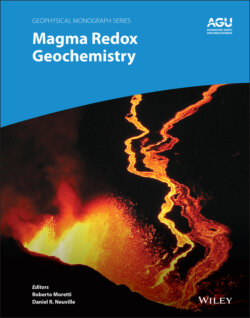Читать книгу Magma Redox Geochemistry - Группа авторов - Страница 22
ABSTRACT
ОглавлениеThe distribution of volatile elements between Earth’s core, mantle, and atmosphere over the last 4.57 billion years has been controlled through redox reactions involving multivalent elements like Fe in minerals and melts, with important implications for the speciation of elements like carbon, oxygen, and hydrogen as fluids or through dissolution in melts. The redox state of Earth’s interior was likely established during accretion of predominantly chondritic building blocks and late‐stage meteoritic impact and concurrent formation of the metallic core. In contrast to thermodynamic predictions of decreasing mantle redox state with depth, some melt and mineral inclusions trapped in diamonds down to the mantle transition zone and exhumed with carbonate‐rich magmas (kimberlites) reveal both the passage of oxidized CO2‐rich fluids and the occurrence of oxidized minerals. These are proof of the redox heterogeneities of the whole mantle that might have in part been inherited from early-stage processes but also testify to the recycling of surface-altered, oxidized materials, a process that became particularly efficient with Earth's transition to a stable plate tectonic regime. Here, we review the current knowledge of the (early‐)mantle oxidation state, how this might have changed through space and time, its effect on the genesis of CO2‐rich magmas, and also highlight unresolved issues requiring further work.
